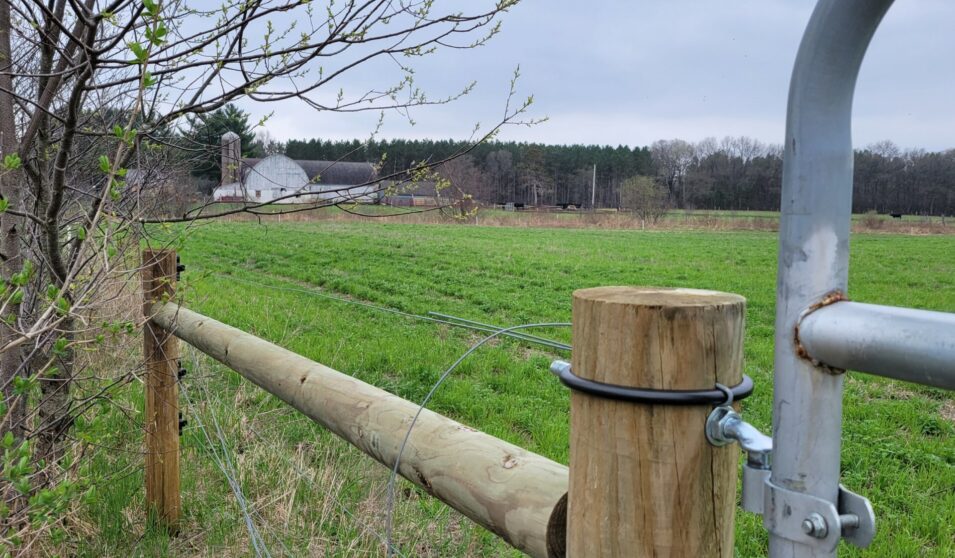Many producers across Wisconsin develop grazing plans for their land every year. When implemented, the plans help protect thousands of acres in the state from erosion, reduce runoff, and improve soil health.
In Portage County, increasing the number of grazing acres is a main priority. Although adoption of these practices has been somewhat slow, farmers in the area are taking notice and taking action.
In 2021, the Portage County Land and Water Conservation Division worked with two beef producers - Jason Disher and Jeffery Lutz - to convert more than 50 acres of row crops into grass-based rotational grazing. Through an interagency partnership with USDA-NRCS and Golden Sands Resource Conservation & Development (RC&D), the producers worked to develop their grazing plans, and reached out to Portage County to request funding and assistance to implement those plans. Both projects were cost-shared through the DATCP soil and water resource management program funding to install fencing and watering systems and seeding on the converted acres.
Collaborating with the landowners was one of the most rewarding aspects of the project for Portage County Conservation Technician Tracy Arnold. “It was so great to work with the landowners and to end up with a completed project that reflected their vision for their property and conserved resources along the way,” she said.
Steve Bradley, Portage County Conservationist, says the benefits of rotational grazing are two-fold for the county. The first benefit is the reduction in runoff. “Both of these farms had surface water benefits for reducing phosphorus entering surface water,” said Bradly. One farm eventually delivered to the Wisconsin River Watershed, while the other went to Lake Emily in the Waupaca Watershed.
Bradley also pointed out that Portage County has sandy soils, which means these conversions are beneficial in reducing the nitrates going into groundwater. “Row crops require nitrogen fertilizer, so transitioning those into a grass-based grazing system that doesn’t need those fertilizers is an important additional benefit,” he added.
Other counties in the area are also prioritizing grazing and are lending a hand when it comes to sharing their knowledge and advice to their neighbors. “Marathon County has a successful farmer network, and they’ve been fantastic in getting information about pasture walks or other events to our interested farmers,” said Bradley.
Portage County hopes to see both of these farmers expand their grazing acreage of their existing farms. “We’re always trying to promote grass-based rotational grazing, and we encourage anyone who is interested to reach out,” added Bradley.
DATCP Soil & Water Report
This story first appeared in the DATCP Wisconsin Report on Soil and Water Conservation, which highlights the conservation projects and successes of our county members.

